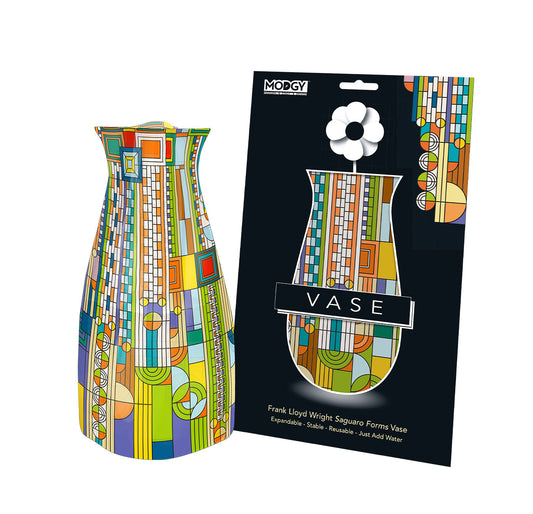How to Think Like Frank Lloyd Wright: Insights, Inspiration, and Activities for Future Architects
How to Think Like Frank Lloyd Wright: Insights, Inspiration, and Activities for Future Architects
Out of stock
Couldn't load pickup availability
Frank Lloyd Wright looked to nature for inspiration as he designed some of the most original, striking, and widely recognized buildings in the world. This unique book is part biography, part sketchbook, part exploration of his most famous projects—and the thinking behind them. By shedding light on Wright's views about landscapes, geometry, and the way people live, the ideas and illustrations in this book will ignite the imagination of aspiring architects. Dozens of thoughtful prompts and activities throughout the book—from developing geometric patterns to creating structures for different habitats to envisioning a floorplan built around a central fireplace—empower readers to translate architectural concepts into their own work.
- For ages 10 and up
Product Details
Product Details
- Product Type: Picture Book, Trade Paperback
- 144 pages, with 144 illustrations
- Published in 2021
- Shipping Dimensions: 9.0 × 10.0 × 0.5 inches (22.9 × 25.4 × 1.3 cm)
- Shipping Weight: 1.4 lb (22.4 oz; 635 g)
- SKU: SKU: SKU010009243
- ISBN: 9781941367476
In these collections:
Discountable Products.
About the Artist
Frank Lloyd Wright
Frank Lloyd Wright (1867-1959) remains an iconic figure in American architecture and design. Born in Richland Center, Wisconsin, Wright's career spanned over seven decades and left an indelible mark on the world of architecture. He was known for his visionary approach, pioneering organic architecture that seamlessly integrated buildings with their natural surroundings. Wright's most famous works include Fallingwater, a masterpiece of modern architecture built over a waterfall in Pennsylvania, and the Guggenheim Museum in New York City, which features a distinctive spiral design. His unique style, characterized by clean lines, open spaces, and innovative use of materials, has influenced countless architects and continues to inspire generations of designers worldwide. Wright's legacy as an architectural genius and his commitment to a harmonious relationship between nature and structures have solidified his place as one of America's most revered architects.
More Frank Lloyd Wright
-
Frank Lloyd Wright "Saguaro" Expandable Vase
Regular price $12.00 USDRegular priceUnit price / per -
Fine Art Shawl/Scarf: Frank Lloyd Wright's "Coonley Playhouse"
Regular price $49.00 USDRegular priceUnit price / per -
Frank Lloyd Wright "Hoffman Rug" Expandable Vase
Regular price $12.00 USDRegular priceUnit price / per -
Frank Lloyd Wright "March Balloons" Expandable Vase
Regular price $12.00 USDRegular priceUnit price / per -
Reverse Umbrella: Frank Lloyd Wright's "Waterlilies"
Regular price $34.95 USDRegular priceUnit price / per -
Travel Umbrella: Frank Lloyd Wright's Coonley Playhouse
Regular price $34.95 USDRegular priceUnit price / per -
Travel Umbrella: Frank Lloyd Wright's Saguaro Forms
Regular price $34.95 USDRegular priceUnit price / per -
Travel Umbrella: Frank Lloyd Wright's March Balloons
Regular price $34.95 USDRegular priceUnit price / per -
Travel Umbrella: Frank Lloyd Wright's Hoffman Rug
Regular price $34.95 USDRegular priceUnit price / per -
Frank Lloyd Wright's Saguaro Forms Earrings
Regular price $40.00 USDRegular priceUnit price / per
-
Thank you!
For more than fifty years, every purchase from the Chrysler Shop supports the non-profit mission and educational programs of the Chrysler Museum of Art. Thank you for your support!
-
Membership has its benefits!
Learn more about how you can support the Chrysler Museum and reap the benefits! Member perks include discounts, exhibition previews, reciprocal memberships and more!
































